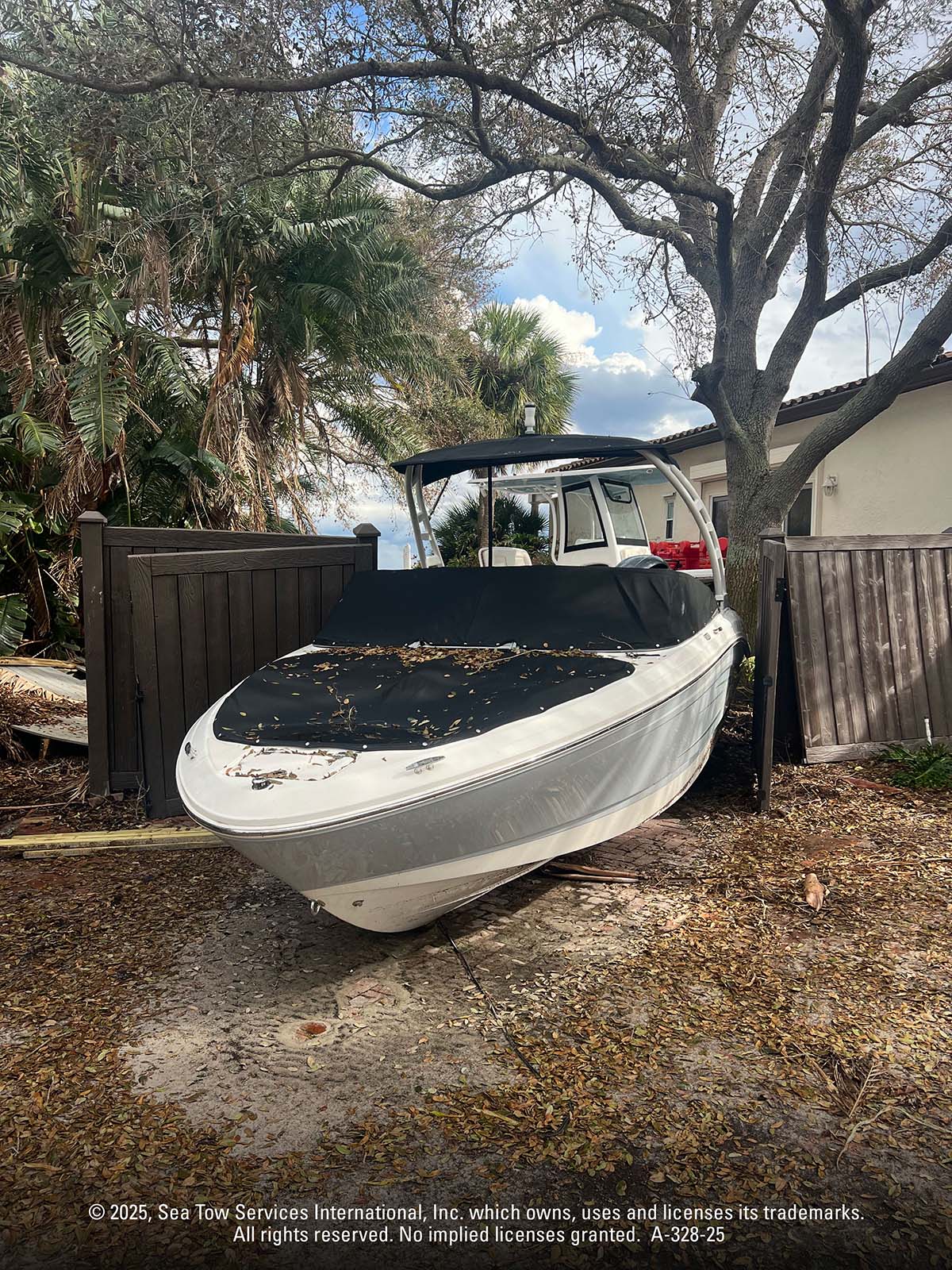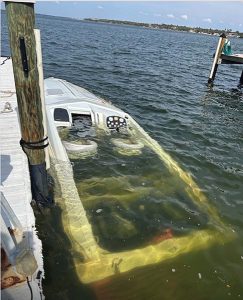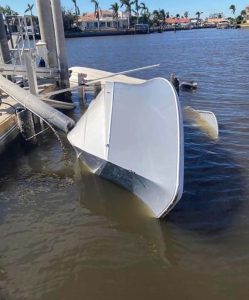
Harboring Safety: How Marinas Can Brace for Hurricane Season
Published on August 14, 2025When skies are blue and docks are bustling, hurricanes might be the last thing on a marina owner’s mind — but the next big storm could be just beyond the horizon. As each season grows more unpredictable, marina preparedness isn’t just smart. It’s essential.
The 2025 Atlantic hurricane season started on June 1 and runs through November 30, with the typical peak activity occurring in August and September. According to the National Oceanic and Atmospheric Administration (NOAA), this season is expected to be above average, with 13 to 19 named storms, 6 to 10 hurricanes and 3 to 5 major hurricanes expected. With warmer temperatures and shifting climate patterns fueling stronger storms, marinas along the Gulf and Atlantic coasts face heightened risk.
In this high-stakes environment, proactive preparation can make all of the difference,- minimizing damage, ensuring safety and supporting rapid recovery.
Lessons from the Past, Eyes on the Future
For many marina operators, hurricane season is all too familiar. After all, 2024 was another above-average hurricane season with 18 named storms, 11 hurricanes, and five major hurricanes, category three or higher. These trends highlight the growing need for marinas to implement comprehensive hurricane readiness plans well before warnings are issued.
Few people better understand the impact of past hurricanes and how marinas can effectively prepare than the experts at Sea Tow Services International. Since 1983, when the United States Coast Guard ceased response to non-emergency assistance calls, Sea Tow has played a vital role in supporting the boating community. With nearly four decades of experience navigating storm response and recovery, Sea Tow provides valuable insights into the challenges marinas face and the proactive steps they can take to minimize risk. While widely recognized for its 24/7 on-water assistance membership program, Sea Tow also specializes in salvage and recovery operations, disaster response, environmental hazard management and oil spill containment. In fact, in southwest Florida, crews are still recovering vessels damaged by previous hurricanes,- a sobering reminder of just how long the effects of a major storm can linger.

Captain John Ward is uniquely qualified to offer key insights, as a marine towing and salvage veteran with decades of experience rooted in family tradition and U.S. Coast Guard service. Since 2004, he has owned and operated multiple Sea Tow franchises across the Southeast and played a critical role in recovery efforts following major hurricanes like Ivan, Katrina, Harvey and Ian. His advice for marinas heading into the height of the 2025 season is clear, practical and drawn from decades of first-hand experience.
Ensure Updated Vessel Insurance Records
With the current hurricane season upon us, Ward said the biggest thing that marinas can do is to ensure that every vessel in a slip has insurance. While most marinas require proof of insurance upon signing a contract, those records are rarely revisited. Over time, policies lapse, and owners sometimes switch providers or cancel coverage altogether without notifying the marina. When a hurricane hits, uninsured boats quickly become a liability—delaying debris removal, complicating salvage efforts and slowing overall recovery.
Annual verification of insurance documentation, especially before storm season, can prevent costly complications later.
Establish a Clear Hurricane Plan
Every marina should have a detailed hurricane preparedness plan for both wet slips and their dry storage—and that plan must be communicated clearly to boaters. “A plan is only useful if your customers know it exists,” Ward emphasized.
In Florida, for example, the standard is a 72-hour activation window, but each facility should tailor its timeline based on size, staffing and proximity to likely storm tracks. The plan should specify when and how boats must be moved or secured, outline marina responsibilities and define communication procedures.
Ward recommends that a marina present the hurricane plan during initial contract signing, and remind customers of key protocols via seasonal emails, newsletters, or text alerts at the start of each hurricane season. This will help to clarify roles and responsibilities for boat owners and the marina.
Prioritize Communication
“Communicate, communicate, communicate,” Ward said. Many boat owners—particularly new ones—may never have experienced a hurricane before and need extra guidance.
In addition to keeping customers informed, marina managers should stay in regular contact with their local marina associations and neighboring facilities. Sharing best practices, response resources and even debris removal options can benefit the entire coastal community.
Line Up a Trusted Contractor
One of the most common post-storm challenges is debris removal. “Boats are difficult enough,” Ward said, “but the bigger issue tends to be debris.” Many marinas attempt to hire multiple contractors after a storm hits, resulting in scheduling conflicts, inefficiencies, escalated costs and an increased time frame. A more effective approach is to secure a single, reputable contractor in advance who can handle the full scope of post-storm cleanup. Having a signed agreement or memorandum of understanding in place can significantly reduce downtime when every hour counts.

Don’t Overlook Environmental Hazards
In the rush to secure vessels and protect infrastructure, environmental risks can be overlooked. Fuel leaks, chemical spills and storm runoff can pose serious hazards to both your marina and surrounding waters. One simple yet often forgotten step: ensure all fuel and waste valves are properly shut and bled. Small actions like these can make a big difference in minimizing environmental impact.
Secure the Premises After the Storm
In the chaotic hours and days following a storm, access control is critical. Ward strongly recommends hiring a security team and closing off dock access until damage can be assessed. Open docks pose safety hazards, increase liability and leave facilities vulnerable to theft or vandalism. While the marina is being cleaned and repaired, it is best to keep everyone out of the area. People walking through the wreckage is dangerous and slows recovery.
Have a Plan B for Relocated Boats
Perhaps the most difficult and persistent challenge after a hurricane is where to place displaced boats when docks are destroyed or inaccessible. “What do we do when the storm ends and the boats have nowhere to go?” That’s the million-dollar question. To mitigate this problem, marinas should develop a contingency plan—such as offsite storage arrangements or temporary mooring options in coordination with nearby facilities while repairs are in the works.
Staying Ahead of the Storm
There is no one-size-fits-all approach to hurricane preparedness, but the common thread in every successful plan is readiness—before the skies darken. By verifying vessel insurance, formalizing response plans, fostering communication and partnering with key contractors, marinas can weather hurricane season with greater confidence and resilience.
For additional resources click here.
| Categories | |
| Tags |





